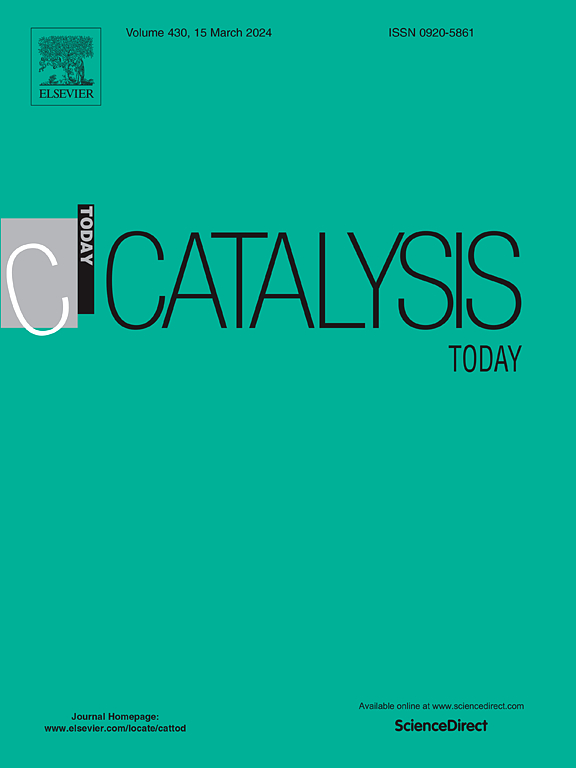How do cyclic functional groups in the Cl-iron 3,5-diisopentoxyphenyl porphyrin complex influence the oxygen reduction reaction?
IF 5.2
2区 化学
Q1 CHEMISTRY, APPLIED
引用次数: 0
Abstract
To improve the efficiency of proton exchange membrane fuel cells and air batteries, one must solve the slow kinetics of the oxygen reduction reaction (ORR) on the cathode by using catalysts, which satisfy low-cost, high durability, and environmental friendliness. Recently, nitrogen and iron-based macrocycles such as iron porphyrins have attracted much attention. Although experiments have investigated the ORR activity of the Cl-iron 3,5-diisopentoxyphenyl porphyrin macromolecules (ClFeM), the effects of adding cyclic functional groups such as hydroxyphenyl, carboxylphenyl, aminophenyl, thiophenyl, and pyridyl to ClFeM on the ORR mechanisms and activity remain unknown. Here, we explored this issue using the van der Waals-corrected density functional theory calculations. The research will answer three questions: (1) How do the cyclic functional groups modify the ORR mechanisms and activity? (2) How do the cyclic functional groups affect the stability of the catalysts via studying dissolution potentials? And what is the role of the Cl atom in the stability of the ClFeM-based catalysts? Furthermore, we also elucidated the physical insights into the interaction of the intermediates with the ClFeM-based complexes.
cl -铁3,5-二异氧苯卟啉配合物中的环官能团如何影响氧还原反应?
为了提高质子交换膜燃料电池和空气电池的效率,必须解决阴极上氧还原反应(ORR)动力学缓慢的问题,使用满足低成本、高耐久性和环境友好的催化剂。近年来,氮基和铁基大环如铁卟啉引起了人们的广泛关注。虽然实验研究了cl -铁3,5-二异氧苯基卟啉大分子(ClFeM)的ORR活性,但在ClFeM中加入羟基、羧基苯基、氨基苯基、噻吩基和吡啶基等环官能团对ORR机制和活性的影响尚不清楚。在这里,我们使用范德华校正的密度泛函理论计算来探讨这个问题。本研究将回答三个问题:(1)环状官能团如何改变ORR的机制和活性?(2)通过研究溶解势,环官能团如何影响催化剂的稳定性?Cl原子在clfe基催化剂稳定性中的作用是什么?此外,我们还阐明了中间体与基于clfem的复合物相互作用的物理见解。
本文章由计算机程序翻译,如有差异,请以英文原文为准。
求助全文
约1分钟内获得全文
求助全文
来源期刊

Catalysis Today
化学-工程:化工
CiteScore
11.50
自引率
3.80%
发文量
573
审稿时长
2.9 months
期刊介绍:
Catalysis Today focuses on the rapid publication of original invited papers devoted to currently important topics in catalysis and related subjects. The journal only publishes special issues (Proposing a Catalysis Today Special Issue), each of which is supervised by Guest Editors who recruit individual papers and oversee the peer review process. Catalysis Today offers researchers in the field of catalysis in-depth overviews of topical issues.
Both fundamental and applied aspects of catalysis are covered. Subjects such as catalysis of immobilized organometallic and biocatalytic systems are welcome. Subjects related to catalysis such as experimental techniques, adsorption, process technology, synthesis, in situ characterization, computational, theoretical modeling, imaging and others are included if there is a clear relationship to catalysis.
 求助内容:
求助内容: 应助结果提醒方式:
应助结果提醒方式:


